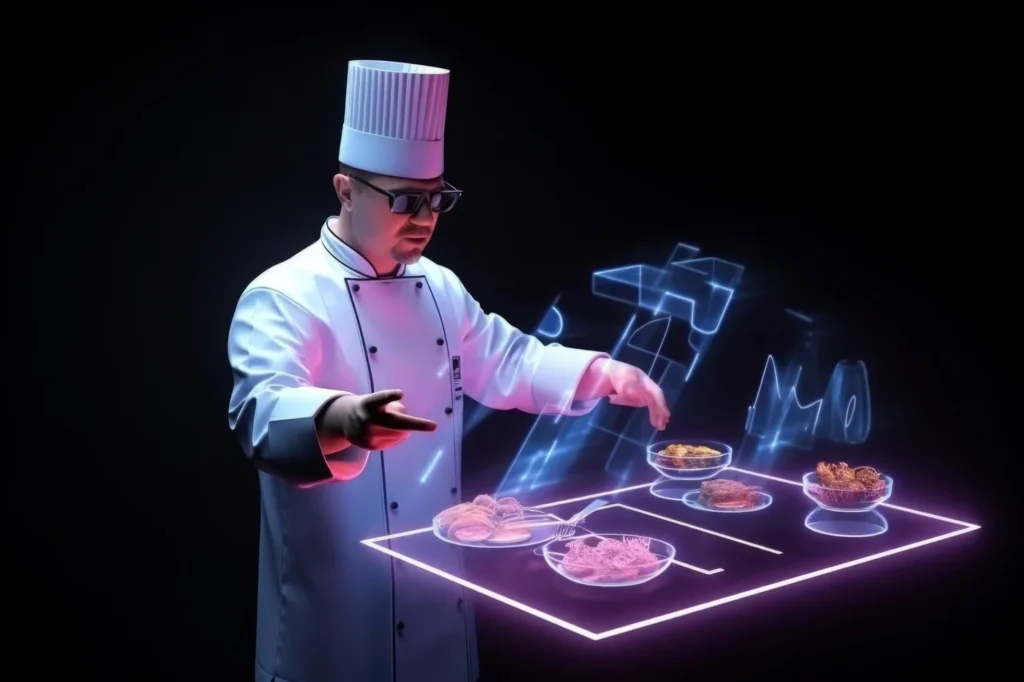In today’s fast-paced restaurant environment, innovative restaurant equipment is essential for staying competitive. Kitchen technologies like KDS have transformed operations, boosting efficiency and minimizing errors. Mobile ordering systems and table-side devices further enhance the dining experience by allowing customers to customize orders, reduce wait times, and handle payments independently.
By embracing advanced restaurant equipment such as smart cooking tools and inventory systems, restaurants can streamline operations and elevate food quality. Together, these technologies improve service, increase customer satisfaction, and ensure restaurants stay ahead in a rapidly evolving industry.
Smart Cooking Equipment
Smart cooking gear has completely changed how chefs make dishes now, mixing a little bit of precision together with ease. The wise innovation ovens will undoubtedly include a more human-friendly feature which is app compatibility in the household items where we can manage and monitor from mobile. The ability to program the timing and temperature of any dish, from anywhere in the restaurant is available to all top chefs. Bringing induction cooktops is another advancement that uses quick warming and exact temperature control. This not only cuts down cooking times but also makes for greater safety since you reduce your risks of being burnt.
Furthermore, combi ovens have emerged as a popular choice due to the amount of food they can prepare and their ability to multitask. A combination of steam and convection cooking, these machines let chefs bake, roast, and steam all in the same unit. This saves space but also ensures that dishes are more consistent and of a higher quality. Chefs are free to play around with cooking methods (hence the variety of menu items) Programmable ovens set the cook times for specific cycles so each dish is cooked perfectly and prevents human error.
Smart technology in commercial kitchen equipment has also contributed to sustainability efforts. Modern technology incorporates power-saving modes and smart sensors on most appliances to save useful energy depending on what you are cooking. This not only contributes to cost-saving operational mechanisms but also caters to the rise in sustainability focus which proliferates in the food industry nowadays. Restaurants can benefit massively from adopting these state-of-the-art cooking technologies, allowing them to work more efficiently, and creatively, and achieve higher customer satisfaction as a whole.
Inventory and Supply Chain Management Tools
Modern restaurants can not function efficiently without effective inventory management, and so far technology has come a long way by helping in this regard. With advanced inventory tracking software, restaurant owners and managers can view stock levels in real time so that they never accidentally over-order or run out of crucial ingredients. These systems are also often linked to point-of-sale (POS) systems, which give you access to real-time information about sales trends and help better predict future inventory requirements. With inventory management automation, restaurants can redeem the time get their minds off tedious work, and put more effort into producing remarkable dining experiences.
In addition, automated ordering systems streamline the supply chain process. With these tools, restaurants can set reorder levels for their ingredients, triggering automatic purchase orders when stocks reach a certain threshold. This not only saves time but also minimizes human error in ordering, ensuring that kitchens are always well-stocked. By leveraging these technologies, restaurants can reduce waste, optimize their supply chains, and ultimately improve their bottom line, all while ensuring that they have the freshest ingredients available for their menu.
Food Safety and Hygiene Innovations
The cleanliness of food and restaurant hygiene is an issue that is crucially important for every restaurant, and advanced technologies are already helping to secure high standards in this area. For example, the systems of smart temperature monitoring give the employees of a kitchen an opportunity to keep track of the temperature of the storage areas of foods in real-time. These systems make alert sounds when temperatures go high or low so that food does not congeal and is also healthy for human consumption. They will help restaurants cut the chances of transmitting diseases through food and enforce another measure of safety for the food served.
Furthermore, they said, intelligent shelves or boxes with sensors can be installed to track the humidity and air quality of storage for foods. These technologies are of great help to reduce food waste and keep the ingredients fresh for extended periods. Food hygiene is improved when chefs and managers can view real-time data on how the food has been utilized and disposed of hence making the right decisions. Through integrating these techniques, restaurants not only safeguard customers but also create a good image as safe restaurants in the preparation and service of food.
Enhancing Customer Experience through Technology
The customer experience is a key focus in modern dining, with technology playing a vital role. Kitchen display systems (KDS) are essential for restaurants, acting as intermediaries between front-of-house and kitchen staff. They replace traditional ticketing systems, presenting orders electronically, which speeds up cooking and reduces errors. KDS enhances cross-functional communication and ensures each meal meets customer specifications, increasing satisfaction and consistency.
Another important vehicle for changing the restaurant business is the use of mobile ordering. Now with the introduction of apps for food delivery services, customers demand to be able to order from their devices. Another advantage specific clearly to restaurants using mobile ordering is that customers can easily tailor their meals and arrange either pickup or delivery at a time convenient to them. It also orders more customers and also shortens the time people spend waiting which enhances service as well as the rate of customers served per table.
Moreover, table-side devices like tables and kiosks are changing the dining experience. Such devices allow customers to look at menus order food and make payments without calling the attention of a waiter. Besides, it increases customers’ interest and engagement while freeing restaurant employees and servers for the main work – delivering high-quality service and attending to other customers. So combining these technologies, restaurants are able to offer guests a more efficient, and satisfying dining experience with increased sales potential to correspond to modern people’s expectations.
Conclusion
Effective kitchen technologies are desirable to any modern restaurant establishment planning to operate in a stewed environment. These are literally shifting restaurant operations to a new level of functionality ranging from smart cooking equipment that improves precision and efficiency to advanced inventory systems that simplify restaurant operations. Also, creativity in food safety methods and customer relations practices is improving standards while guaranteeing customer satisfaction. So many opportunities and efficiencies have arisen in the restaurant business, those who manage to utilize these improvements are a plus in enhancing their operational capacity as well as providing excellent service that will make the clients want more. Embracing these technologies is not merely fashionable; it is the way to go in the Culinary industry to ensure long-term business sustainability.







